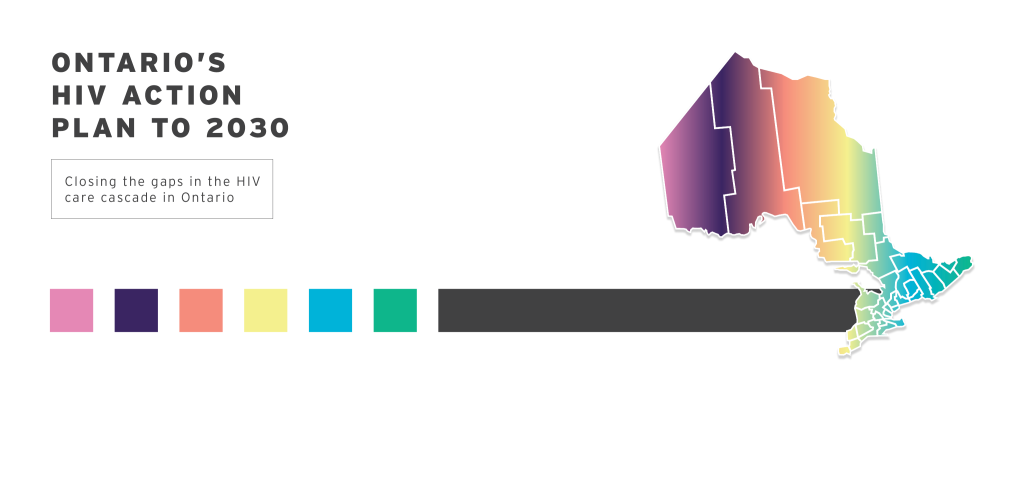Download Action Plan in English
Télécharger Plan d’action en français
The HIV Action Plan to 2030 was developed by the Ontario Advisory Committee on HIV/AIDS (OACHA) under a mandate to provide advice to the Ontario Minister of Health.
The plan builds on Focusing Our Efforts: OACHA HIV/AIDS Strategy to 2026 (published in 2016) and extends it to the end of the decade. It recommends priorities for action by which Ontario’s HIV sector and other key partners can reduce new infections and meet the UNAIDS 95-95-95 targets: 95% of people infected with HIV are diagnosed, 95% of those diagnosed are on treatment and 95% of those on treatment are virally suppressed.
OACHA includes representation from people living with HIV and the populations most affected, people working in HIV-related health and community services, public health and HIV researchers. OACHA held specific consultations with leaders from Indigenous and Black communities, and worked with the support of the Ministry of Health HIV and Hepatitis C Programs and the Ontario HIV Treatment Network.
Being published alongside the plan is HIV Strategy for Ontario to 2026 – a Progress Report (en français), a companion piece examining Ontario’s progress towards the goals set by the previous plan.
Vision
By 2030, new infections are rare, very few Ontarians are living with undiagnosed HIV, and all people with HIV have the treatments and other services and supports they need to manage their health well.
Goals
To make this ambitious vision a reality, OACHA has recommended that the actions of Ontario’s HIV sector be guided by these goals:
- Reduce new infections
- Ensure everyone at risk of HIV has access to timely, high-quality, culturally responsive testing services
- Ensure everyone diagnosed with HIV has access to timely treatment and high-quality, culturally responsive care
- Reduce stigma, discrimination, and other barriers to optimal health, including social determinants of health
Over the past seven years, Ontario has made progress reducing new infections and getting people with HIV diagnosed and on treatment. It has done this by finding innovative ways to integrate HIV prevention and care into other health and social services, including programs for people who use substances, traditional Indigenous Healing Practices, and services for newcomers.
To reach the last 11% of people with HIV not yet diagnosed and the 13% of people diagnosed but not yet on treatment – many of whom may also be dealing with other complex health and social challenges, such as mental health issues, substance use, poverty, unstable housing and the impact of racism and colonization – Ontario must continue to innovate and work differently. A commitment to health equity coupled with effective and meaningful partnerships between the HIV sector and other services will be key to truly stopping HIV.
